Last year, when I first learned that my house was in the path of totality for this year's eclipse, I immediately logged into BorrowLenses and rented a Nikon 200-500mm f/5.6 VR lens (for photography—it's now on my wishlist) and then purchased a set of eclipse glasses for my family, and materials to build a solar filter for the lens.
I've learned from Reddit's DIY community that people like the end result first... then an explanation, so:
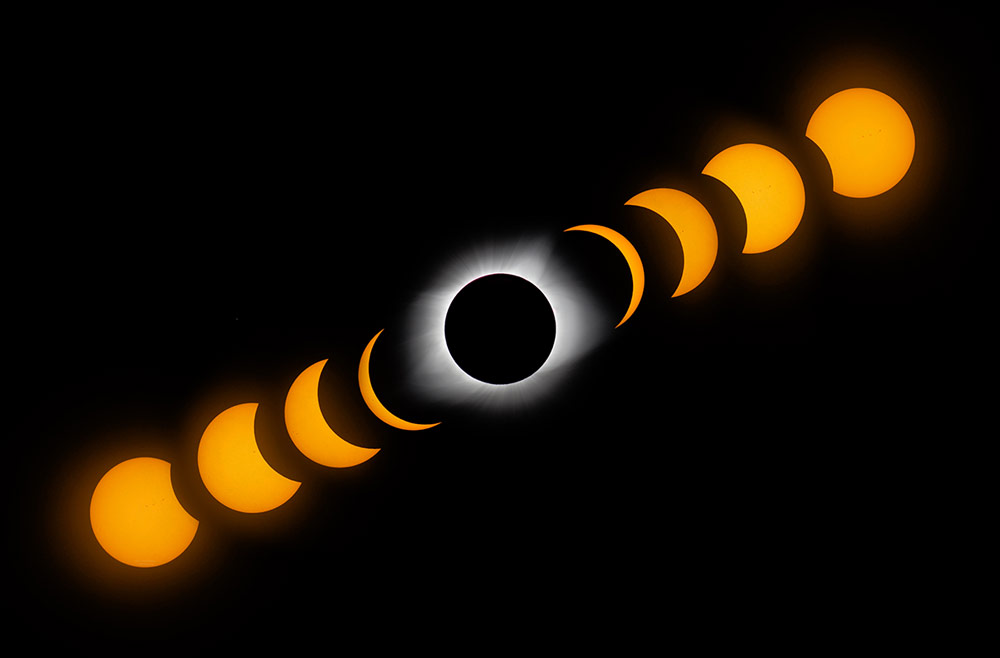
See the full-size image of the Eclipse composite on Flickr.
Going into the eclipse with the 500mm reach, I was hoping to get some interesting pictures of the sun in general, but most especially of the prominences and corona of the sun. Events like the 'diamond ring' and 'Bailey's beads' would be bonuses if I got them... but I also wanted to experience the event firsthand and not worry too much about the camera settings.
As luck would have it, I was able to capture the diamond ring:
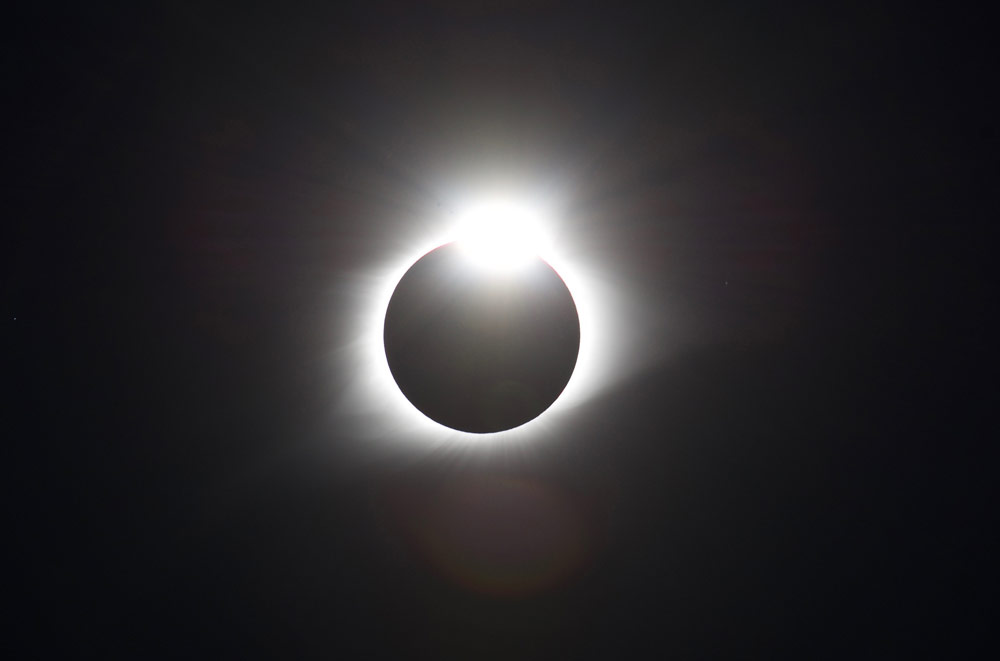
(If you look closely at the right of the prominences, I'm pretty sure that's Mercury!)
And a little bit of Bailey's beads (including a nice little bit of a solar flare on the right!):
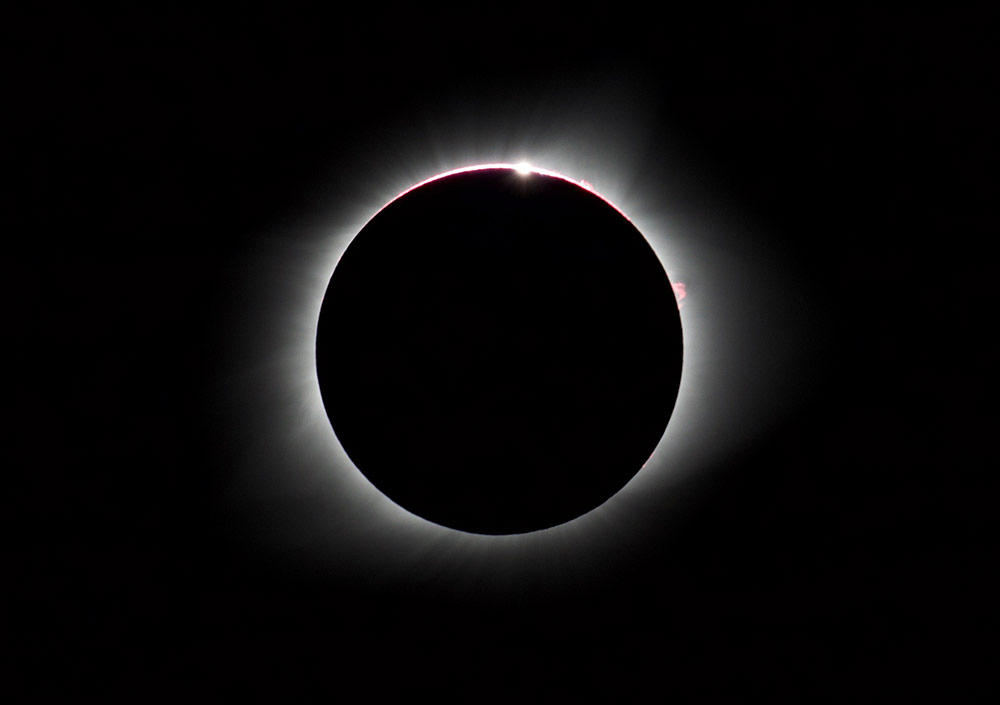
But the total eclipse (totality) was far and away the most breathtaking event. I have many pictures from totality... but nothing can do it justice like seeing it in person:
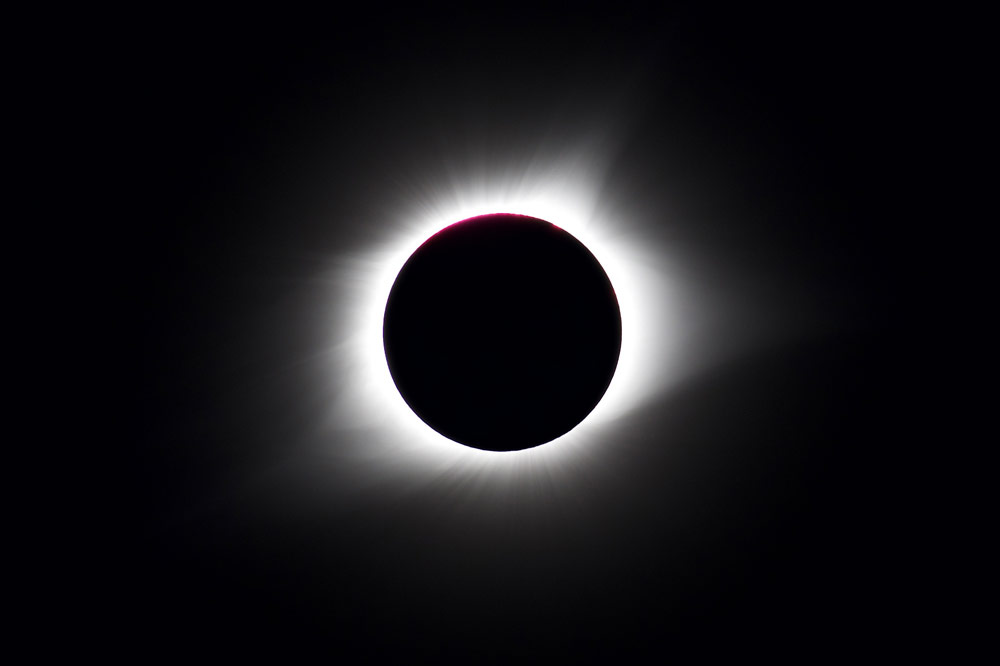
It was amazing to witness; not only the imagery, but also the experience of day-into-night-into-day. Seeing Venus, Mercury, and Jupiter (I saw the former two, but the latter was hidden by a cloud). Seeing the strange but eerily calming purplish hue of the thin fiery ring around the black moon. And hearing all the annoying dissonance of the cicadas, who thought it was night ?.
The many people who said you have to see it in person were completely right. If you had a 99% partial eclipse, you did not experience the spectacular difference that is totality. If you couldn't make it this year, don't fret—there's another total eclipse in 2024 that passes right through the US again!
Helpful tips for photographing the eclipse
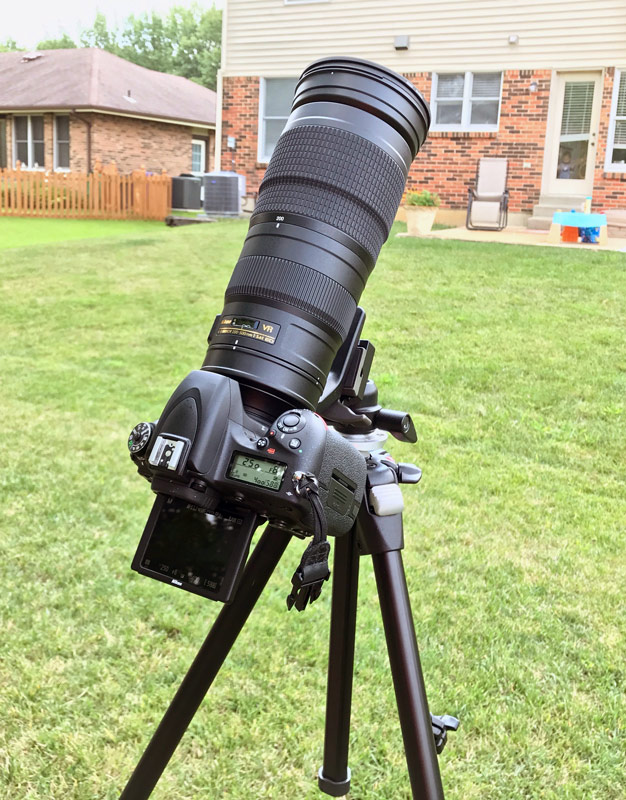
My setup for 2017: Nikon D750 + 200-500mm f/5.6 VR on Manfrotto tripod with ball head.
I read through a number of articles when preparing for the Eclipse. I'm a fairly competent photographer, and am used to thinking on my feet. However, there are few events I've photographed which had to be timed by the second! Here are some of the ways I was able to get the nice images above, while still relaxing and enjoying the event (even observing shadow bands on a large white sheet with my kids!):
- This is obvious, but bears repeating: Do not photograph or view any part of the eclipse (except totality, for that brief moment) without a solar filter in front of the camera lens or your eyes. And to be even more safe, consider only using the camera LCD (if you have 'live view' or an EVF on your camera) for composing shots.
- Set up at least one 'environmental' camera, like a GoPro (or a cheap knockoff, like I have, and have it pointed at you and any other bystanders you're with. The whole thing happens so fast that you don't really have time to process it, and it is fun to see some of the unexpected reactions around you!
- Know there is a lot of luck involved: my Dad, who was only 2 miles away, ended up having a large cumulus cloud block out all but three seconds of totality. It happens, especially in August when weather patterns start bringing in more clouds :( — you'll just have to live vicariously through others' media, and look forward to some future eclipse.
- If you're using a hefty camera lens or telescope (with proper filters), buy, rent, or borrow a really sturdy tripod. The kind that you could hit with a baseball bat and it would barely budge. I invested in an expensive Manfrotto tripod 10 years ago, and care for it, and it's still a tank!
- If you're renting a lens, aim for somewhere between 300-1000mm (35mm / FX equivalent). Any less and the sun will just be a tiny dot, any more and you'll be cropping out prominences!
- If you have more than one SLR or otherwise nice camera with manual adjustment capability, lock the exposure and record the entire event so you can observe the dramatic change in brightness. Using a cheaper camera or the camera on your phone will likely result in autoexposure muddying everything up.
- Practice! I practiced a month before—and realized I needed to get a larger threaded filter adapter. Don't screw it up the day-of because you never ran through the entire process. The sun is pretty much the same brightness any day of the week as it is during partial stages.
- If you can't afford a specialty solar filter (especially a giant 95mm one like the 200-500 Nikon requires!) you can make your own for a pretty low price. Just get a threaded step-up ring and some a solar filter sheet, then assemble one yourself.
- Bracket your shots during totality: I was originally going to manually step through some shutter speeds during totality to ensure I got both corona and prominences... but after practicing with timings, I realized that would've taken up all the time I had to actually look at it myself. So I bracketed between -2 EV and +2 EV with a 7 shot bracket, and set my camera in high speed shutter mode. During totality, I shot off four rounds of bracketed shots, and didn't even look at the camera while it was happening. Let your fancy camera do the hard work.
And the last thing: be prepared for whatever—a few of the frames I had timed, a cloud popped in view and ruined my sequence... but I still snapped a few pictures and videos, and got some interesting results, for example:
My family is already making plans for the 2024 eclipse—we're fortunate to be only a few counties away from totality in Illinois, so we have no excuse to miss it! And maybe I'll be able to rent some exotic 800mm+ lens next time!
Comments
Wow, Jeff. These are absolutely STUNNING photos!
Amazing.
Hey! If you still get notifications on this old of a post... I'm glad I stumbled upon this... I have a Nikon D750 and I was thinking about renting that exact 200-500 lens for this upcoming eclipse, and it was great seeing your results with it, hopefully mine will be similar. Any plans change in the last few years or new lens choices?
Well, I would still go with that lens, but now I have a Sony mirrorless camera, and am going to use my APS-C camera with a 70-350mm G lens, which should give me about 525mm of equivalent focal length, which will be quite close to my D750 + 200-500 combo!
If I were on Nikon, I'd rent the 200-500 again; it's a great lens!
Hi Jeff,
Noticed a frame of the 2017 solar eclipse in your studio tour vlog. Is that a matte print out of the eclipse photo and what’s the material or board on which it’s taped?
That's a canvas print, 16" x 20" — I think I got it printed from Canvas On Demand, who I use for any canvas prints, they do a pretty good job for a pretty good price.